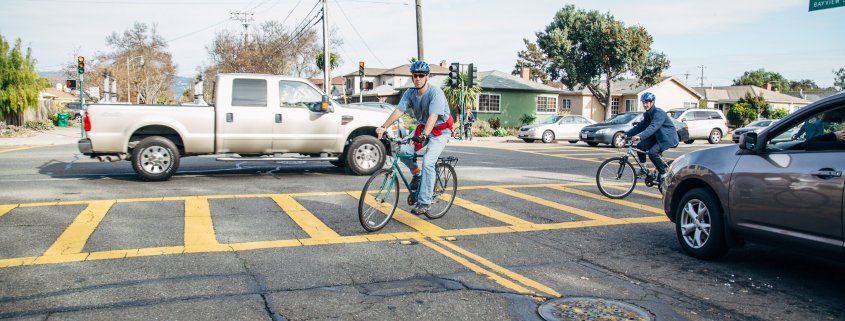Zero Fatalities Task Force Tackles Dangerous Street Design, Speeding
In 2018, Governor Brown signed AB 2363 to establish the Zero Traffic Fatalities Task Force to make recommendations for eliminating traffic fatalities in California. CalBike’s Executive Director, Dave Snyder, is a member of the task force.
The bill, authored by Assembly Member Laura Friedman, originally removed the 85th percentile rule in current law about setting speed limits. The rule requires government agencies to set the speed limit at or near the 85th percentile speed of existing traffic on the street or road. In other words, before setting enforceable speed limits, a city has to measure existing speeds, and use the speed of the third fastest car out of 20 to set the speed limit. This requirement has forced cities to actually increase speed limits on many streets, resulting in higher speeds, more crashes, more killings, and more devastating injuries.
Unfortunately, the bill’s provision to rescind this requirement was opposed by California’s AAA affiliates and other motorist advocacy organizations. In the end, the bill was amended to require a task force to study the issue.
That Task Force has held three of four scheduled meetings before the Secretary of Transportation David Kim must submit a report of the Zero Traffic Fatalities Task Force’s findings to the Legislature. Its members have studied existing law and debated alternatives to the 85th percentile rule, the efficacy and feasibility of enforcement including automated enforcement (speed cameras), and the potential of engineering to reduce speeds and fatalities.
A key change to existing law that CalBike has advocated in these meetings is the ability to set speeds lower than 25 mph on neighborhood greenways and other streets. These are places where we want to encourage calm, livable streets safe for walking and biking. On streets with higher speed limits, equitable and automatic enforcement can reduce crashes and save lives of people walking and biking.
Another recommendation is an expansion of the kinds of streets and areas where local agencies may reduce the speed limit below what current law allows. The most important expansion would be on streets identified as “high injury corridors,” where speeding motor vehicles demonstrably cause deaths and serious injuries. Another expansion would broaden the definition of a business district or a school zone.
When the Task Force completes its work, CalBike, California Walks, and other allies will make sure the insights and recommendations from the Task Force are distributed broadly. More local partners and community members should be engaged in the discussion so that many more voices than were included in the Task Force can amplify the most important recommendations. Together, we can empower local residents and elected officials to set speed limits where they should be to support our goals of creating safe and healthy neighborhoods, and not crossed by streets designed for people to drive through quickly.





